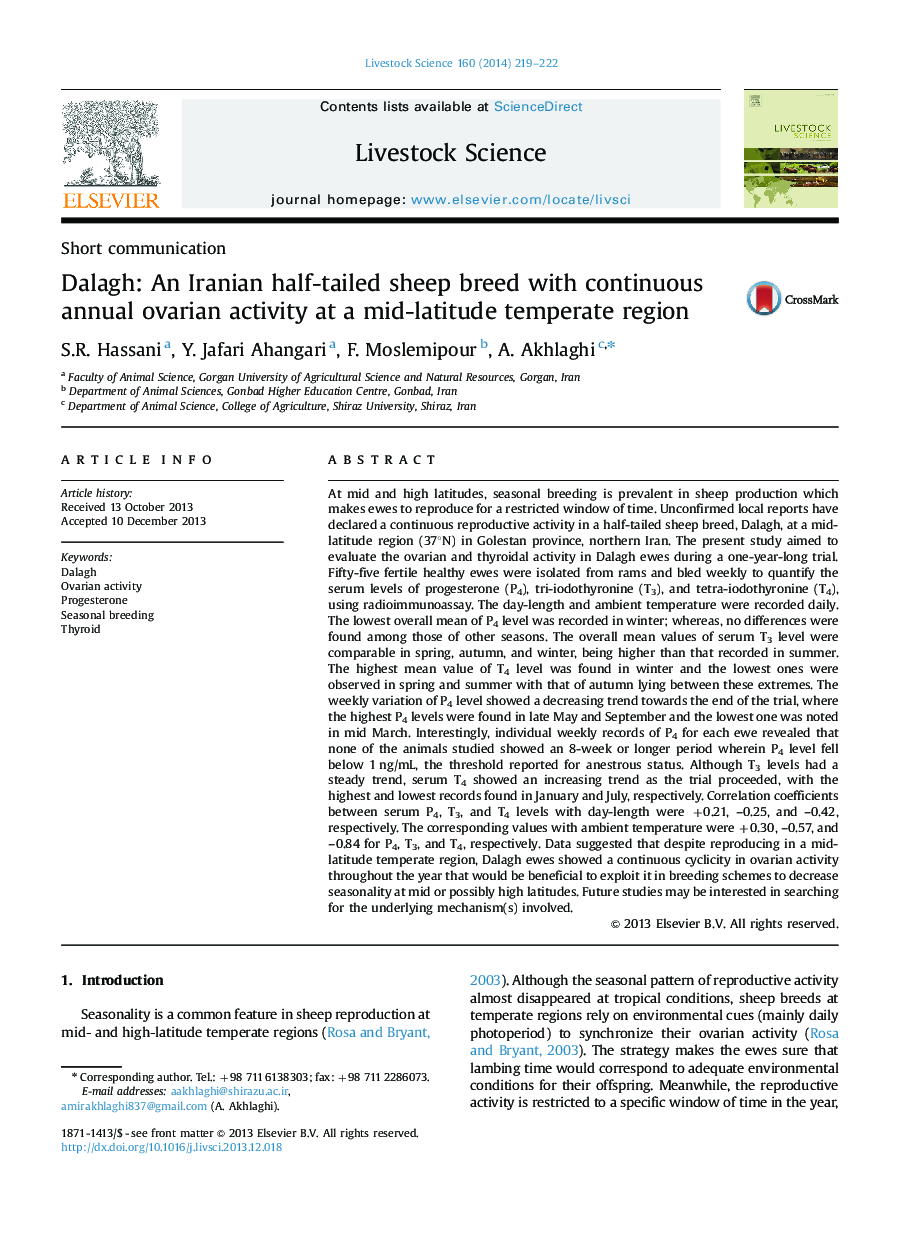| Article ID | Journal | Published Year | Pages | File Type |
|---|---|---|---|---|
| 2447315 | Livestock Science | 2014 | 4 Pages |
At mid and high latitudes, seasonal breeding is prevalent in sheep production which makes ewes to reproduce for a restricted window of time. Unconfirmed local reports have declared a continuous reproductive activity in a half-tailed sheep breed, Dalagh, at a mid-latitude region (37°N) in Golestan province, northern Iran. The present study aimed to evaluate the ovarian and thyroidal activity in Dalagh ewes during a one-year-long trial. Fifty-five fertile healthy ewes were isolated from rams and bled weekly to quantify the serum levels of progesterone (P4), tri-iodothyronine (T3), and tetra-iodothyronine (T4), using radioimmunoassay. The day-length and ambient temperature were recorded daily. The lowest overall mean of P4 level was recorded in winter; whereas, no differences were found among those of other seasons. The overall mean values of serum T3 level were comparable in spring, autumn, and winter, being higher than that recorded in summer. The highest mean value of T4 level was found in winter and the lowest ones were observed in spring and summer with that of autumn lying between these extremes. The weekly variation of P4 level showed a decreasing trend towards the end of the trial, where the highest P4 levels were found in late May and September and the lowest one was noted in mid March. Interestingly, individual weekly records of P4 for each ewe revealed that none of the animals studied showed an 8-week or longer period wherein P4 level fell below 1 ng/mL, the threshold reported for anestrous status. Although T3 levels had a steady trend, serum T4 showed an increasing trend as the trial proceeded, with the highest and lowest records found in January and July, respectively. Correlation coefficients between serum P4, T3, and T4 levels with day-length were +0.21, –0.25, and –0.42, respectively. The corresponding values with ambient temperature were +0.30, –0.57, and –0.84 for P4, T3, and T4, respectively. Data suggested that despite reproducing in a mid-latitude temperate region, Dalagh ewes showed a continuous cyclicity in ovarian activity throughout the year that would be beneficial to exploit it in breeding schemes to decrease seasonality at mid or possibly high latitudes. Future studies may be interested in searching for the underlying mechanism(s) involved.
